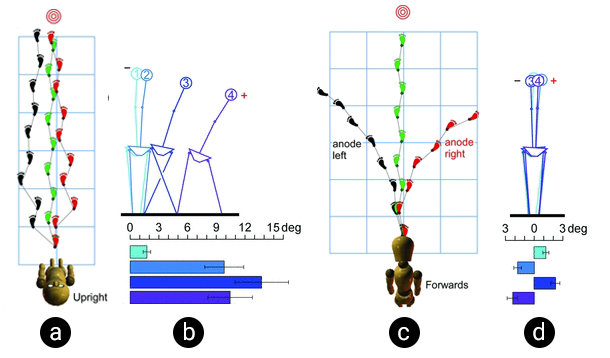PROJECT DETAILS
About This Project
Galvanic Vestibular Stimulation (GVS) is a technology that directly affects a user's vestibular system by altering their sense of balance and direction through electrical stimulation via electrodes placed on the mastoid bones behind each ear. In standing users, GVS evokes a prolonged galvanic body sway.In walking users, it affects balance and produces anodal staggered foot placements (Fig a, b). However, in walking users, when their head is pitched forward, it causes them to turn smoothly from their planned trajectory in the anodal direction (Fig c, d). In this work, we explore GVS as a collaborative navigation interface in an asymmetrical VR game, Dark Room. A VR player equipped with the GVS device, and a non-VR player who can control the GVS stimulus (time, duration, direction) to steer the walking trajectory of the VR player, work together in an 'escape the room' like game.

Project Data
A Novel Collaborative Navigation Interface using GVS. VRST 2017.
Asymmetric VR, remote controlled human, GVS, escape the room